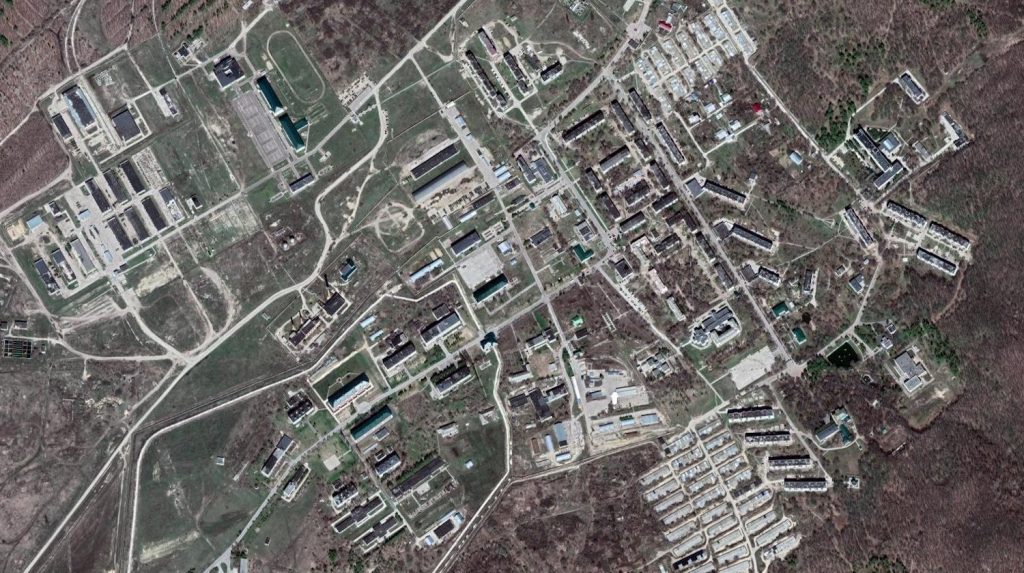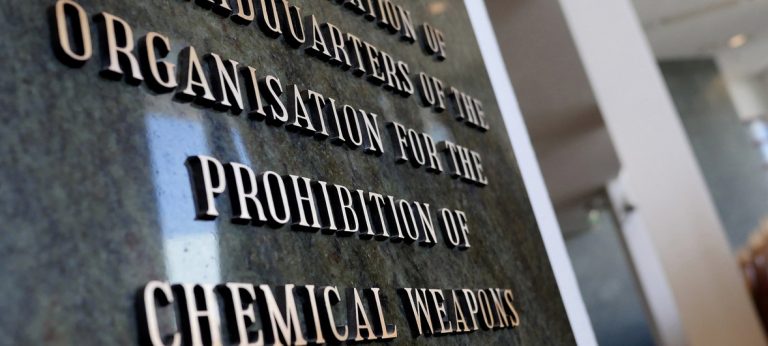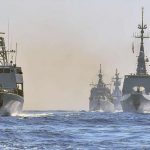The statement by Germany’s government that the Bundeswehr laboratory has established the fact that Russian opposition leader Alexei Navalny was poisoned with Novichok-group warfare agent means Russia used prohibited chemical weapons.
The OPCW assumes that any poisoning of a person with a nerve agent is considered the use of chemical weapons.
Russia’s military intelligence service used this warfare agent in the UK city of Salisbury in 2018, against Sergei Skripal and his daughter Yulia, and used Novichok in Bulgaria as well.
The use of warfare agents is an act of terrorism and suggests the second stage of sanctions to be imposed. According to H.R.1724 law – Chemical and Biological Weapons Control and Warfare Elimination Act of 1991, (by Congressman Sam Gibbons, Dem.), the one who has violated the Chemical Weapons Convention is granted three months and if during this period he a) does not admit to or does not acknowledge his crime, b) does not allow the organization for chemical disarmament to visit his facilities and make sure that production is stopped, the second stage of sanctions shall be introduced immediately, providing for: diplomatic status lowering, up to the severing of diplomatic relations; export and import ban; curfew for Russia’s Aeroflot flights in U.S. airspace; termination of financial transactions, including Russia’s banking system being weaned off SWIFT. These sanctions should be imposed on November 27, in accordance with the law.
Russia has been developing warfare agents for a long time, violating the Convention on the Prohibition of the Development, Production, Stockpiling and Use of Chemical Weapons and on their Destruction, 3 September 1992. The Times, citing British intelligence data, claims that A-234 (Novichok) warfare agent was produced at the military research facility in Shikhany. A-234 developers – Vil Mirzayanov and Vladimir Uglev – confirmed this information by their statements. The agents were developed under a Soviet Defense Ministry program codenamed Foliant. Four agents were synthesized during the work: A-1972, B-1976, C-1976 and D-1980. Only D-1980 can be a powder, all others are liquids. The agent that is now called Novichok, was produced at the Shikhany branch of the State Research Institute of Organic Chemistry and Technology.
Chemical weapons survey was carried out by the 71432 military facility (the 33rd Central Research Institute of the RF Ministry of Defense – Shikhany-2 Research and Testing Institute of Chemical forces), in 2013-2014. This is particularly evidenced by the analysis of the court decision issued by the Leninsky district court in Kirov on a claim of Krivosheyev A. against the Federal State Budget Institution the 48th Central Research Institute of the RF Ministry of Defense (No. 2-2806 / 2015) concerning the invalidation of the order on the demand of wages, interest, and compensatory damages. When transferring from the 33rd Central Research Institute to the 48th Central Research Institute of the RF Ministry of Defense, the payments to Krivosheyev, stipulated by the RF Government decision «About the payments to the persons engaged in chemical weapons works» (No 187 dated 29.03.2002), have been suspended. The court decision indicates that Krivosheyev was admitted to chemical weapons survey by the head of the 33rd Central Research Institute of the Ministry of Defense of Russia. This permission was valid for the first three months of 2014. Consequently, the fact that the court decision was issued in favor of compensating A. Krivosheyev for work with chemical weapons shows that at the beginning of 2014, the 33rd Central Research Institute conducted chemical weapons survey.
The analysis of state research procurements for the 33rd Central Research Institute of the Russian Defense Ministry indirectly confirms the information related to chemical weapons survey carried out there. The data confirm the procurement of components and precursors used to create chemical weapons was carried out in 2016-2017 on a regular basis.


On June 29, 2016, the 33rd Central Research Institute of the Russian Defense Ministry placed a tender number 0360100043516000046 for the purchase of material resources for scientific activities within the framework of one research work. The list of goods that were purchased included butyrylcholinesterase, used in antidotes for neuro-paralytic agents, particularly Purchase No. 030100043516000041 contained 3-Hydroxy-1-methylpiperidine, which is a chemical that can be used to create chemical weapons. The 33rd Central Research Institute also made purchases of other chemical components used as precursors for some nerve warfare agents (for example, purchase No.060100043517000050), in particular:
• Trigenylphosphine;
• Nitromethane;
• Acetonitrile;
• Triethylamine;
• Thionyl chloride (included in List No3 of the Convention on the Prohibition of Chemical Weapons, the precursor for some nerve warfare agents);
Dimethylamine hydrochloride.
Among the substances purchased by the 33rd Central Research Institute of the Russian Defense Ministry, there was diethanolamine, 68 barrels of which were discovered on July 8, 2013 in the city of Baniyas (Syria). The same substance was recorded in Syria on April 17, 2018 in Duma (Syria) and it can be used to produce Yperite toxic warfare agent.
The 33rd Central Research Institute also purchased dimethylsulphoxide, used to simulate the use of neuro-paralytic agent for the purpose of testing or developing detection devices.
Research activity and research work at the 33rd Central Research Institute of the Russian Defense Ministry have boosted since 2016. Procurement volumes do not allow speaking about the full-scale production of chemical weapons, but the acquisition of some components along with a significant number of laboratory animals may indicate the development of new chemical compounds.
A significant proportion of rabbits among the animals purchased by the 33rd Research Institute could be observed. Rabbits are the most sensitive animals, in particular, to neuro-paralytic agents.
Some purchases of the 33rd Central Research Institute of the Russian Ministry of Defense involve the purchase of equipment used to test the stability of aerosols, particularly containing fighting poisonous substances. So, in 2017, there was the purchase of wind power modeling equipment.
The analysis shows that the activity of research at the 33rd Central Research Institute during 2013-2016 coincided in time slot with the active use of chemical weapons in Syria.
The purchase of diagnostic reagents for invitro Cholinesterase biochemical blood studies (Cholinesterase FS) is comparable to the number of laboratory animals purchased in the framework of separate research works in terms of quantity. Serum cholinesterase performs a protective function in the body. It prevents the inactivation of acetylcholinesterase, hydrolyzing the inhibitor of this enzyme – butyryl- choline – at high speed. Cholinesterase injection 100% protects against deadly doses of warfare agents, sarin, soman and VX-gases.
This may indicate that all laboratory animals are used in experiments involving neuro-paralytic agents. A similar situation is with the studies on the level of albumin in human blood serum and plasma. Medico-biological tests for detecting sarin’s use are carried out to reveal the presence of its chemical signature and the presence of sarin adducts with proteins – primarily cholinesterase and albumin – in the tissues of the individual.
The boost of research on chemical and biological weapons of mass destruction development, amid escalation between Russia and the Western world, as well as Kremlin’s active involvement in armed conflicts in Europe and the Middle East, indicates that Kremlin has resumed the development of weapons of mass destruction that can be used within hybrid hostilities. Russia is unlikely to use chemical and biological weapons via its own armed forces.
The use of chemical and biological weapons is now logical as part of further hybrid war strategy implementation and their supply to terrorist groups and Russian private military companies and irregular forces serving the RF’s interests in various parts of the world. Under this strategy, biological and chemical weapons can be used not only in hot spots, where Russia has its interests, but also in the West through terrorist zealots, as part of the destabilizing tactic in enemy states. At the present stage, such countries as NATO-member states and Ukraine are number one for Russia for this purpose. Such tactics will allow Russia to formally not use the forbidden new-generation weapons, but at the same time to achieve its own goals, eliminating targets.
These facts indicate that Russia is not only violating the Chemical Weapons Convention by developing new nerve agents, but also uses them in terrorist acts to destroy political opponents and people whom the Kremlin considers its enemies. Terrorist attacks have expanded beyond Russia’s borders and undermine the West’s security. Russia has become a state sponsor of terrorism, which requires a tough response by the White House Administration and support for the Stopping Malign Actions from Russian Terrorism (SMART) Act by Democratic Congressman Max Rose and Congresswoman Kendra Horn of Oklahoma introduced in the Congress on July 10.




